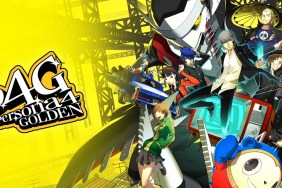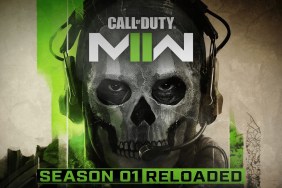My sword shall slay thee with my mighty red gems.
Puzzle Quest is one of the first popular titles to blur the lines between “casual” and “hardcore”, two terms that N’Gai Croal in a game critics’ rant at the 2009 Game Developers Conference denounced as marketing terms that have somehow found their way into the vocabulary of the game journalist. (I wave my hand in guilt.) Instead, he suggests us to reject our tainted jargon and accept “A New Taxonomy of Gamers”, which separates gamers into skill players and tourists, completionists and perfectionists, and premium and wholesale players.
[image1]As much as I agree, however, there’s no need to abandon “casual” and “hardcore” as words, just a redefinition is in order. I pin “casual” and “hardcore” at the ends of a scale indicating how many barriers of entry – including controls, rule complexity, gameplay depth, and intrinsic knowledge – there are for a non-gamer to play the game. By that definition, Puzzle Chronicles is more "hardcore" than Puzzle Quest and its sequel Puzzle Quest: Galactrix.
Infinitive Interactive, developers of both Puzzle Quest and Puzzle Chronicles (moving from publisher D3 to Konami), has decided to solve the problem of complexity (hex-based grids in Galactrix give me headaches) with seemingly more complexity, though they have rightfully returned to the simpler visual space of the square-based grid. As an alternative to the top-to-down, turn-based, 3-or-more matching mechanics (or really, the “watch your opponent get a lucky 4-of-a-kind, 5-of-a-kind, 4-of-a-kind, and so on combination for whopping amounts of mana and attack damage“ mechanics) of Puzzle Quest, you are thrust into a sideways, real-time, Columns-inspired battle-grid that you can imagine is as difficult to explain as it is to say.
Simply standing next to the booth for Puzzle Chronicles at the Konami press event, the crowd watching the puzzle action were leaning their heads to the side as if a question mark was suspended above them. So to make this simple, imagine the grid like a football field (that is, wider than it is long) along the bottom half of the screen, with your gems sliding from left to right and your opponent’s gems sliding from right to left. Where the gems stop sliding or hit the center “bottom” of the playing area is determined by a dividing line that starts in the middle of the grid. Your goal is to move that dividing line towards your opponent’s side, enlarging your territory and thereby squeezing the enemy into a tighter and tighter space until it is forced to withdraw by way of “overwhelming gems OMG WTF!!!” submission.
[image2]Thankfully, moving the dividing line requires you to do something familiar: destroy skulls. However, skulls are not gems by themselves anymore, but attached to one of the four regular colored gems – red, blue, green, and yellow – that once again supply mana for your special abilities. Your gem piece is a 3×1 block made of three different gems, a block which you can rotate but not color-cycle through. Wherever it lands, the piece will break into its respective gems which will land separately towards the center “bottom” of the screen.
Similar to Columns, how you break these gems is by setting up patches of gems of the same color, and then waiting for a special “break” colored gem that breaks a patch of its color. So you’ll form a large patch of green gems, connected together in every which way (except diagonally), that hopefully have some green skull gems in it, and then hope for a green break gem to come along and destroy the patch. Any skull gems that are removed build up a skull meter, which when filled, move the dividing line towards your opponent’s side, with a handy cut-scene on the top half of the screen showing your 3D character attacking your opponent. Of course, your opponent isn’t just going to let you crush him and will be doing the same to you on his side of the grid. It’s a knottier puzzle interpretation of tug-of-war, but the concept still works nonetheless.
Aside from the basic “skull meter” strategy, you can also activate special effects and magical spells tied to your equipment, which you will acquire throughout your adventure, ala Puzzle Quest. If you can manage to get the same colored gems into 2×2 (or 3×3 and 4×4 for greater effect) blocks, the gems will coalesce into a larger gem holding an icon of the equipment piece tied to the color. Breaking this gem activates the equipment’s power, which can be anything from dishing additional damage to causing the stun status effect, disabling the ability to rotate gems. The special effect can also be activated simply by clearing gems and gaining enough mana from them to fill the equipment’s special meter.
[image3]In other words, it’s not so “casual” anymore, is it? In fact, the only point of similarity to Puzzle Quest is the adventuring element, which has your pseudo-Conan-the-Barbarian character (can the shirtless buff barbarian with a large sword and a leather waistcloth be more generic?) trying to save his race from enslavement after being freed by a sorceress. There’s no word yet on whether you can choose a female or a different class of hero as you could in Puzzle Quest. The only environmental setting shown at the press event was a desert level, where you had to battle snakes for antidotes and free a war beast from its vile owners, but there will apparently be levels outside of the desert motif like jungles and aquatic lands.
Level and growth progression will work similarly as well while being more concrete. After each dual, any empty spaces left on your board after your win will be turned into a gold piece and all gems on your enemy’s side of the board will be turned into experience. As your character gains experience, he will increase stats in strength, agility, honor, and wisdom, as well as earn points to distribute throughout skill trees to increase some usual benefits, such as a higher absorption percentage of mana from clearing a certain gem color. Your mounts, like the war beast, will advance in level if you complete specific mini-game challenges. In the case of the war beast, it’s a classic top-to-down Column puzzle mini-game that asks you to clear certain colored gems within a short time limit.
Some of the puzzling seemed slow (even the “quick drops” were sluggish) and the 3D avatars on the top screen were Playstation-era quality, but the build offered at the Konami press event was in its earliest stages. At the same time, the adventuring element seems to have been expanded and the Puzzle Quest-esque artwork and backdrops are superb. Whether or not it will match the popularity of Puzzle Quest will likely depend on how casual players will respond to the newly revamped hardcore rules, but by and large, this is a title that aims to overtake Puzzle Quest as the new puzzler to win over our hearts and wallets. Look for Puzzle Chronicles to arrive on the PC, XBLA, PSN, DS, and PSP in the last quarter of this year.











